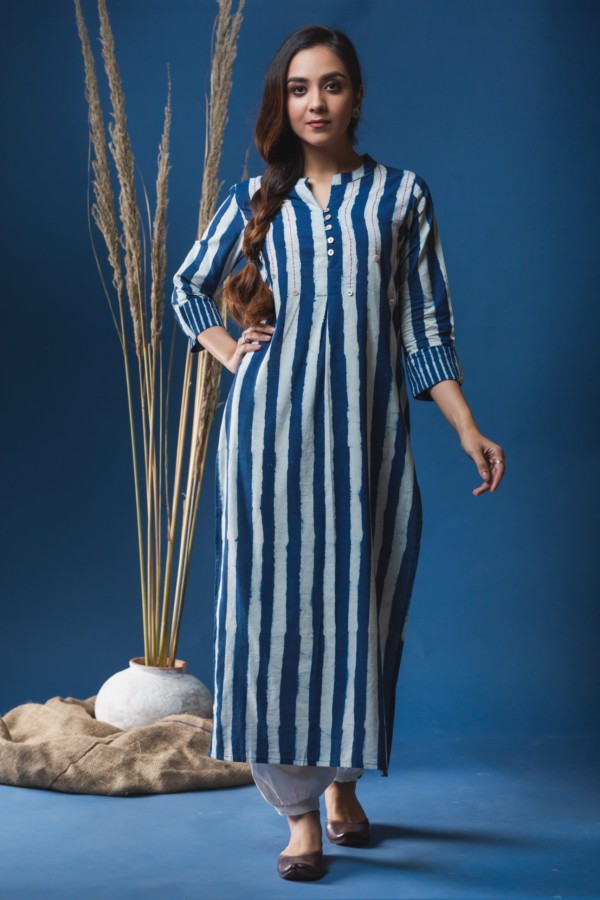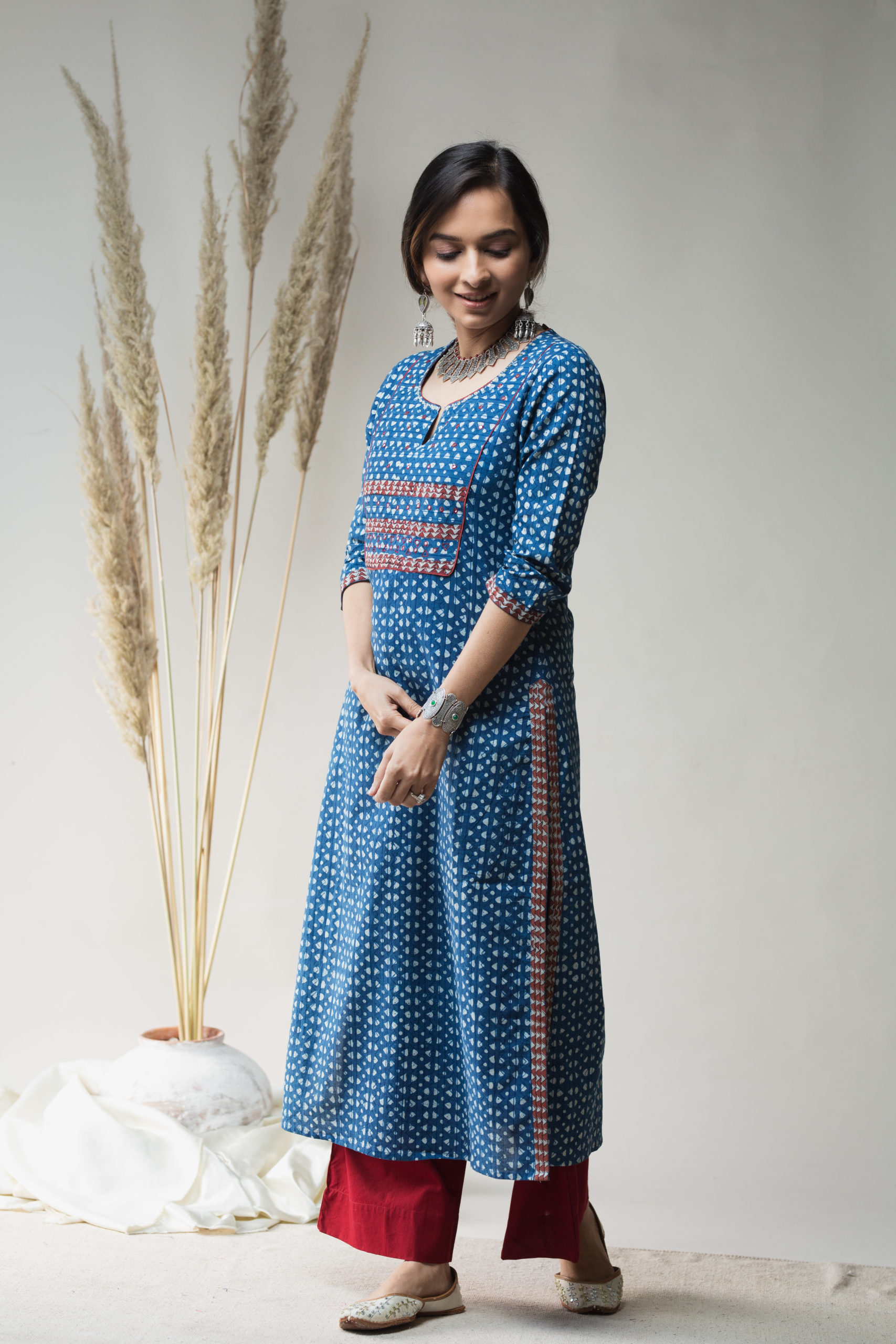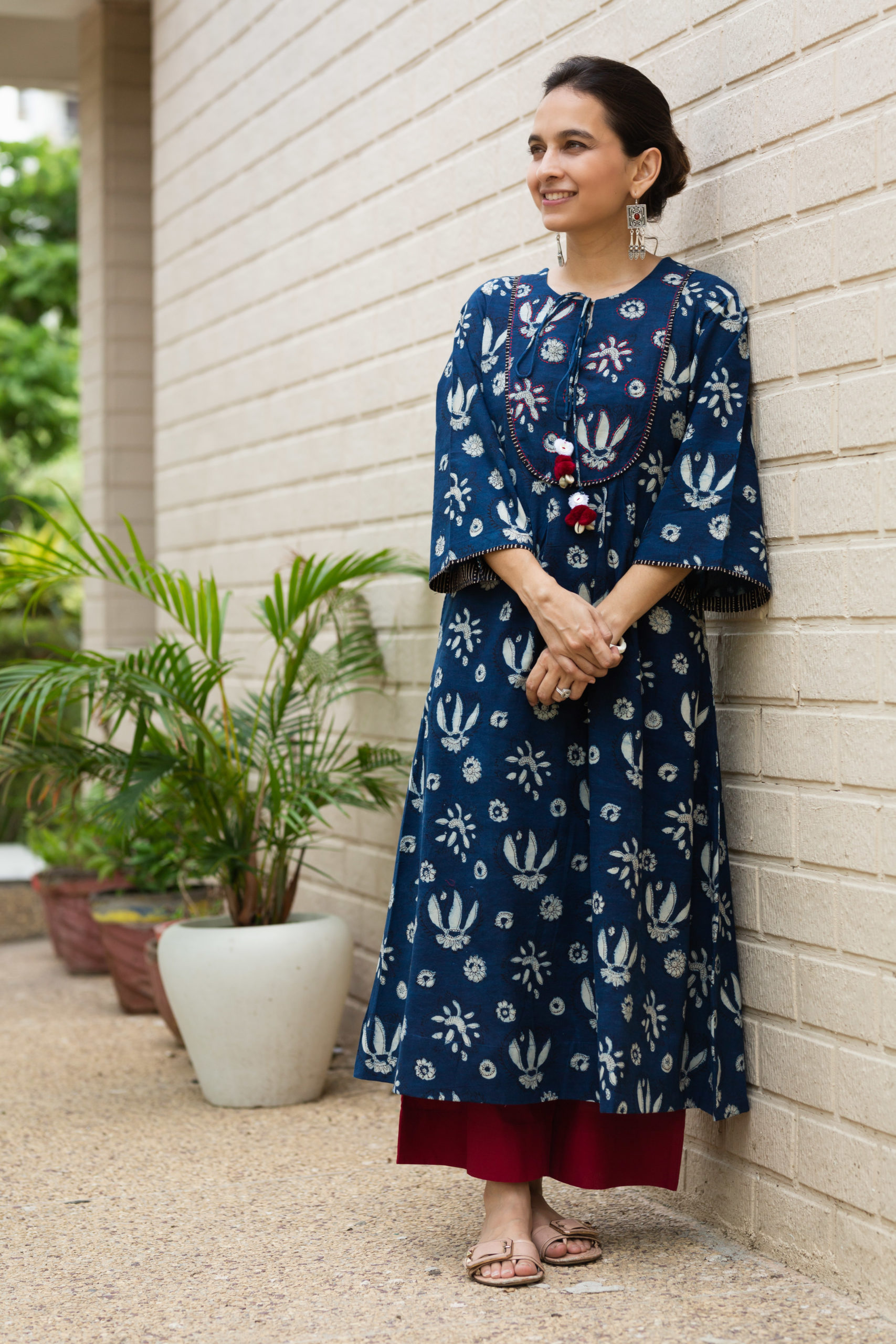Known for its rich culture and heritage in everything ranging from folk music, dance, food, architecture and handicrafts – Rajasthan is also the home to Indigo and block printing. All kinds of Indian ethnic and contemporary wear continue to incorporate Indigo block prints in their designs. Bagru, a desolate village on the Jaipur-Ajmer road, has its own separate place and importance in the textile industry. This place is famous for its natural Indigo dyes and serves as a hub for various boutiques and fashion houses.
- The Indigo Saga
One out of the seven colours present in the rainbow, Indigo is a subtle combination of blue and red – the blue being dominant. Formerly known as the Blue Gold of India, Indigo is extracted from the woad and Indigo plants. Indigo plantation in India can be dated back to as early as 4th century BC. Since the time this colour came into existence, it has been called “the colour of desire”. There have also been various disputes and conflicts about the Indian Indigo products internationally.
- The Origination of the Name
Some 5000 years ago, the Indigo plant used to grow in the Indus Valley where it was called “neela” meaning dark blue and hence the name. Indigo refers to a natural dye extracted from the leaves of the Indigo plant.
- From Plantation to Printing
- The vibrant blue dye is extracted from the Indigo plants by soaking Indigo bundles.
- Long cotton sheets are simultaneously laid out to absorb this desirable colour.
- A wax resist is then applied on the cotton sheets with the help of hand-carved wooden blocks.
- Once the cotton fabric gets completely dyed, the areas with wax application remain white while the rest of the fabric gets soaked in beautiful textures of Indigo.
Indigo hand block prints are a popular choice of prints when it comes to Indian ethnic wear for both men and women.
- Why Do Indigo Fabrics Bleed?
A lot of times, it is noticed that Indigo fabrics tend to fade or bleed with the passage of time and number of washes. This happens because Indigo does not form a chemical bond with the fabric into which it is dyed. Therefore, it again becomes insoluble when put into water.
With the ability to fit into all kinds of silhouettes, the Indigo print is an age-old Indian craft that reflects its unique essence in various glorious forms. Representing India in both traditional and contemporary wear, the Indigo print was exported to Europe for the very first time and till date, it continues to have its own unique importance in the global fabric industry.
Kessa offers a variety of Indigo prints to choose from. If you are someone who is looking for just the right combination of culture and quality in your clothing, Kessa is where you need to stop by!



